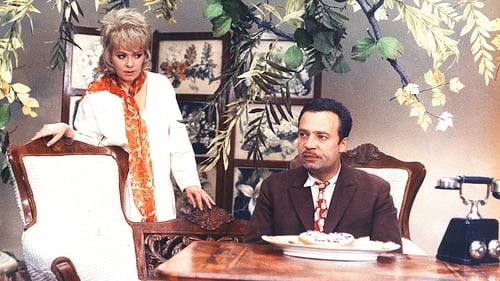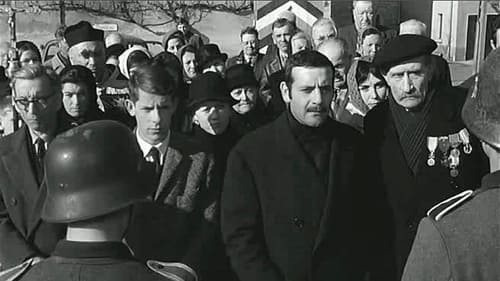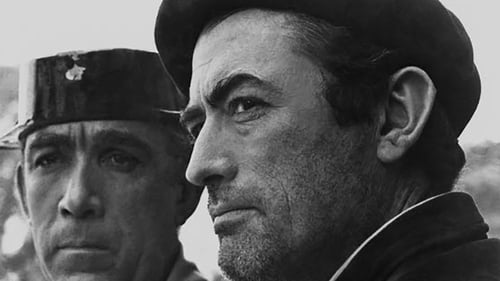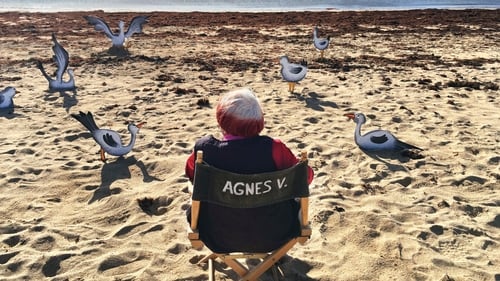Workers' Topical News No. 1 (1930)
Gênero :
Runtime : 5M
Director : W. Mumford
Sinopse
"UNEMPLOYMENT DAY: MARCH 6th 1930." "Contingents of marchers arriving at Tower Hill." A long column of marchers carrying banners moves through great crowds (89); CS of a girl selling the 'Daily Worker' (99). "the Workers' International Relief food kitchen." Men and women eating sandwiches and drinking tea dispensed from the back of a lorry (190): a further shot of the assembled crowds (213). "A London docker speaks". A shot of his audience (223). "A women's contingent." A group of women hold up a banner which reads 'Thousands of children die of starvation in Britain - we demand bread (235); a speaker talks to the crowd (259). The demonstrators proceed to the Mansion House. The procession moves on (305).

The Spanish Civil War (1936-1939) caused a great impression on the lives of most of the American artists of that era, so many movies were made in Hollywood about it. The final defeat of the Spanish Republic left an open wound in the hearts of those who sympathized with its cause. The eventful life of screenwriter Alvah Bessie (1904-1985), one of the Hollywood Ten, serves to analyze this sadness, the tragedy of Spain and its consequences.

Story of a retired old man who is learning what to do with himself.

O filme se passa num escaldante dia de verão. Paul, o narrador, tem um encontro marcado com um convidado que não é outro senão o fantasma do grande escritor Fernando Pessoa. Paul chega em Lisboa ao meio-dia e se dá conta de que os fantasmas só aparecem à meia-noite. Entre meio dia e meia noite numa série de casualidades e ao reconstituir seu passado, Paul encontra diversos personagens, uma curiosa mistura de pessoas, vivas e mortas, cujos caminhos se cruzam num mesmo momento de um tempo descontínuo.

Face Value is a film combining a conscious approach with spontaneity, and contemplation with action. It presents us with the differing views of a region we call “Europe”, an imaginary Europe situated somewhere between London, Marseilles, Prague and the Netherlands.

Arriving at a distant town, a businessman decides to take the identity of a passenger who died during the bus trip.

“This shows the Fire Department leaving headquarters for an early morning fire. The scene is remarkable for its natural effect. The opening of the engine house doors, the prancing of the horses, and even the startled expression upon the faces of the spectators are all clearly depicted.” (Edison Films, 1897)

Comedy with fairy-tale touches, about Kate, who wants to marry, and Mr. Devil, who is not interested in the heart or soul of this passionate and aging lady, but is interested in her good cooking – for Mr. Devil is a glutton.

Christmas Eve. A poor orphan boy trudges through the snow, pathetically. He finally arrives at his miserable cabin. While he is crying, Santa arrives and, singing the title song, offers to take the boy to his workshop. They arrive, and the toys go wild (in the full version, they sing the title song, but this has been censored in some versions due to outdated stereotypes). He plays with a few toys. A candle falls off the tree and starts a fire. The toys try in vain to fight the fire; the boy hooks up a hose to a set of bagpipes and takes care of it.

In 1962, François Truffaut visited the Mar del Plata Film Festival to present his competition in the brand-new Jules and Jim. At that stage of the Festival, from 1954 to 1970, names that today sound mythical were common figures among the guests. Truffaut, along with his colleagues from the Cahiers du Cinéma, would take French films by storm with Les 400 Coups (1959) and the Nouvelle Vague would become a key movement in the history of cinema. A few years after his debut and accompanied by the success of Jules and Jim, Truffaut was already well on his way to becoming a legend. In his visit to the Festival, in 16 mm titled Los 4 Golpes (this, in Castilian), even exhibiting in that look a playful look on his work. This short film, for different reasons, was rarely shown and remains a rarity in the director's film.

Line of Demarcation. is a 1966 film written and directed by Claude Chabrol. Its title in French is La Ligne de démarcation. It is based on upon the memoir Mémoires d'un agent secret de la France libre et La Ligne de démarcation by Gilbert Renault under his pseudonym Colonel Rémy. A small village in the Jura is split by the river Loue which creates the line of demarcation between Nazi occupied France and freedom. A French officer, Pierre (Ronet), is released by the Nazi soldiers to find his chateau converted into a German command centre. Whilst he is obliged to co-operate with the enemy, his wife Mary (Seberg) supports the resistance movement and is willing to risk her life for it. The Nazis step up their activity against the resistance, insisting that any who attempt to cross the line of demarcation will be shot. When his wife is arrested, Pierre decides to switch his allegiance.

Manuel Artiguez (Gregory Peck), um famoso bandido durante a guerra civil espanhola, tem vivido em exílio na França há 20 anos. Quando sua mãe está morrendo, ele resolve visitá-la secretamente na sual cidade natal espanhola. Mas seu maior inimigo, o policial espanhol Viñolas (Anthony Quinn), preparou uma armadilha no hospital para finalmente pegar Artiguez.

A modest Neapolitan man meets a young woman with excessive hairiness. He exhibits her at fairs and marries her. It is after marriage that he receives a tempting offer from a French manager.

De mãe da Nouvelle Vague a ícone feminista, a diretora francesa Agnès Varda expõe seus processos de criação e revela sua experiência com o fazer cinematográfico. A cineasta dá um enfoque especial no método de storytelling que ela denomina de "cine-writing", uma espécie de fórmula utilisada por ela na grande maioria de seus documentários e ficções.

Dois empregados de um armazém de medicamentos encontram no subsolo do estabelecimento barris do exército, lacrados e acidentalmente liberam um gás mortal no ar. Esse gás acaba re-animando os Mortos de um cemitério próximo, que vão querer apenas uma coisa dos vivos: seus miolos.

Miguel Picazo started his film career in 1964: "La Tia Tula" turned him into one of the most distinguished directors in the New Spanish Cinema trend. This documentary approaches his work and personality through his own words. Having only directed a bunch of films, among which "El hombre que supo a mar" or "Extramuros", at his age of 87 Picazo still waits for a new chance to keep on directing films.

Um caminhoneiro americano no Sul da Austrália começa a suspeitar que um homem que dirige uma caminhonete verde, mata jovens mulheres ao longo de sua rota, e passa a jogar um jogo de gato e rato para pegá-lo em flagrante.

Experimental psychodrama about a friend of Krolikiewicz's alcohol addiction (though the themes of the film are universal). One of the first attempts to apply the director's theory of "Film space outside the frame".

A documentary on the revolutionary life and career of director Juan Antonio Bardem, including interviews with many of his colleagues, including Luis Garcia Berlanga.

Greek Theo Angelopoulos traveling from Athens to Ostia, the Roman beach where Pasolini was killed. Far from there, in a Spanish train station, Víctor Erice wanders in an interview about the film resistance. And in Italy, Tonino Guerra, Ninetto Davoli and Nico Naldini lend his voice to the missing Passolini to close a historic triangle on film and solitude.











